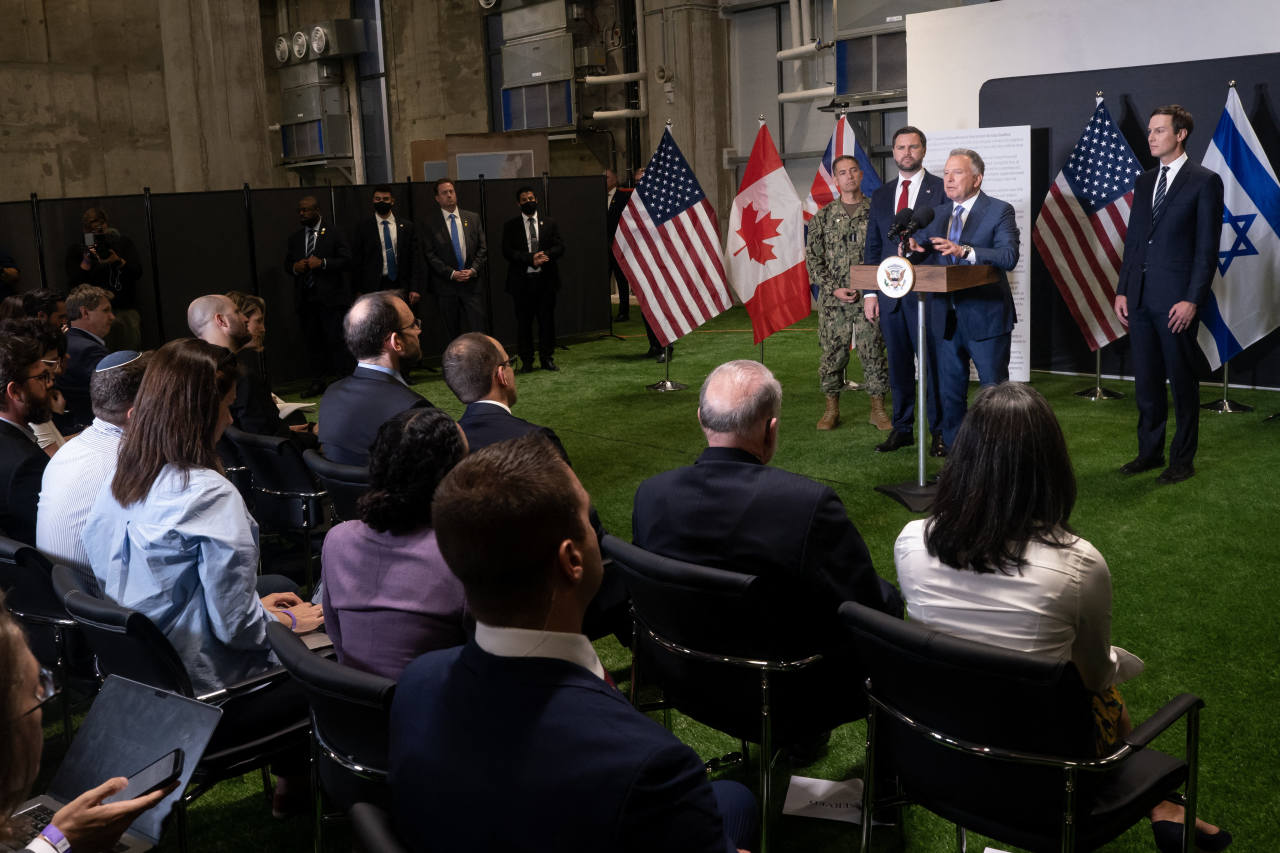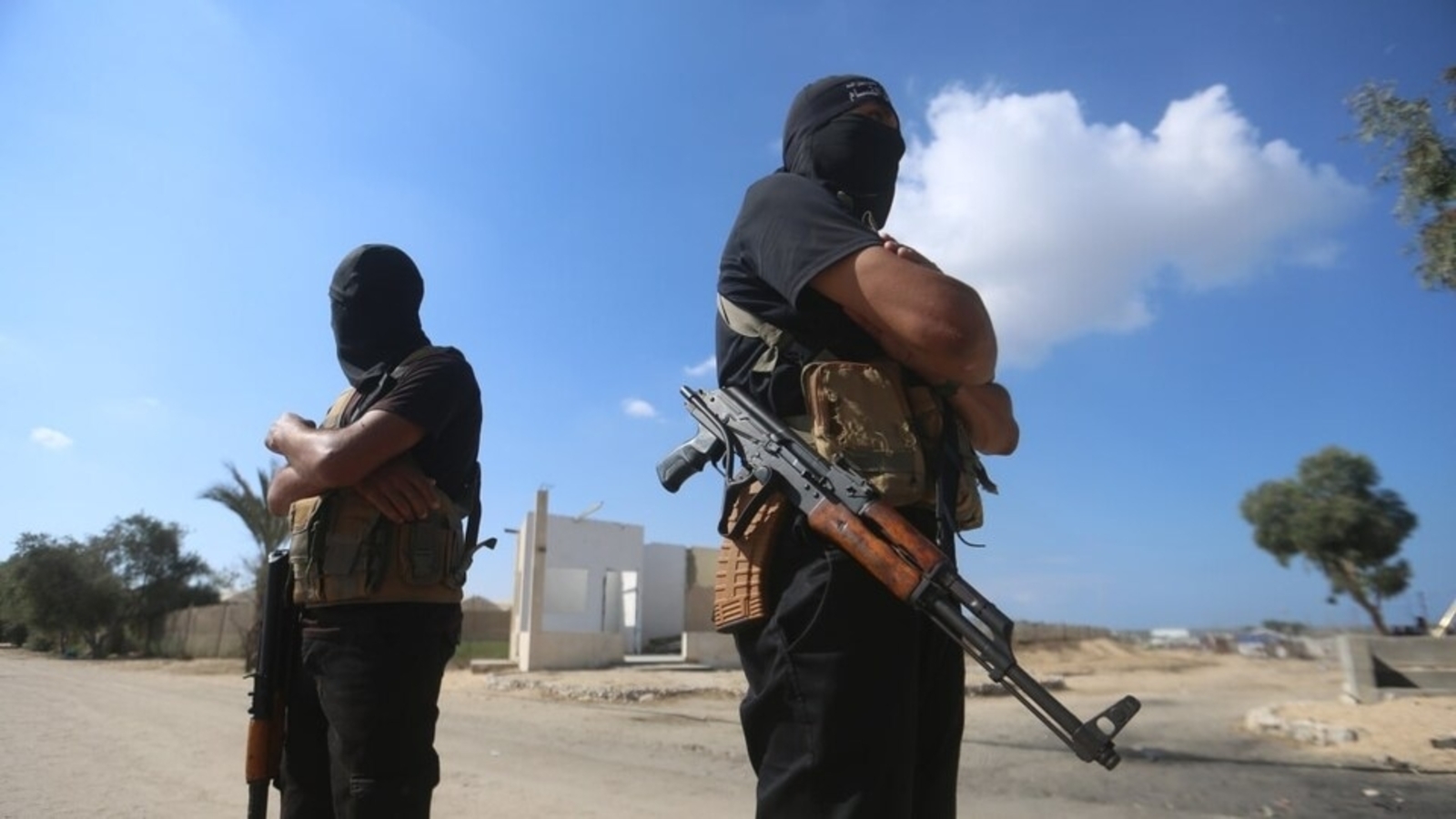Hamas is pushing for a postwar governance role in negotiations with Arab mediators. That stance is at odds with President Trump’s 20-point peace plan, which calls for the U.S.-designated terrorist group to give up power “in any form.”
Hamas has probed Israeli defenses prompting Israeli airstrikes in response and raising worries about the fragility of the cease-fire. And it has launched a bloody campaign against rival Palestinian groups, a show of force demonstrating that it remains the only power capable of ruling the Gaza Strip.
The group is betting it can assert itself without triggering a return to war.
“Hamas wants to show that no one can dismantle it and it’s the strongest actor in Gaza,” said Avner Golov, a former Israeli national-security official and now vice president at MIND Israel, an advisory group.
Leaders of the militant group told Arab mediators in Cairo in recent days that Hamas won’t be erased and that it expects to play a part in the governance of the enclave going forward, the mediators said. The demand comes as negotiations are turning to the second phase of Trump’s plan—crafting Hamas-free alternatives for administering and securing Gaza.
Trump’s peace plan calls for Hamas to disarm, but the group is wary of giving up any weapons or stepping back from conflict without guarantees that the war will end. Hamas wants mediators to push for a 10-year cease-fire to enable talks on Gaza’s future, the mediators said.
The diplomatic moves follow a string of attacks by small Hamas cells over the past week and an ongoing campaign against armed families and militias in Gaza. Hamas, meanwhile, argues that Israel has been violating the Trump agreement by carrying out strikes and limiting the entry of construction equipment and personnel needed to search for the bodies of dead hostages that remain in Gaza.
Hamas’s skirmishing is meant to signal to Israel there is a price for failing to deliver, said Hasan Abu Hanieh, an independent expert on Islamist groups based in Amman.
“For Hamas, the cease-fire is an agreement, not a surrender,” Abu Hanieh said.
Hamas didn’t respond to requests for comment. Hamas chief Khalil Al-Hayya struck a diplomatic tone Monday in an interview on an Egyptian state-affiliated channel, saying that the war was over.
“We are determined that this agreement will hold,” Al-Hayya said. “It will last, because we want it to last.”
Trump’s peace process is at a critical juncture now that Hamas has freed the last living hostages it held in Gaza and the cease-fire remains largely intact two weeks on. The administration has sent a string of heavy hitters to Israel this week to make sure the fighting doesn’t resume.
Special envoy Steve Witkoff and Trump son-in-law Jared Kushner arrived early in the week and were joined by Vice President JD Vance. Secretary of State Marco Rubio arrived Thursday evening local time.
“It’s important, particularly in the next couple of weeks, that we keep the cease-fire together,” Rubio said as he traveled to the region.
On Sunday, Israel said Hamas militants carried out attacks, including one that left two soldiers dead near the southern Gaza city of Rafah. Israel launched around 120 munitions at Hamas tunnels, weapons depots and other military infrastructure in response.
Hamas officials denied any knowledge of the attack on the soldiers, saying it had lost contact with fighters in the Rafah area. But Arab mediators and Israeli military officials said the pattern of incidents around the same time didn’t look like an accident and leaned on Hamas leaders to stop the attacks and not risk collapsing the cease-fire.
The fighting shows how both sides are engaging in gray-zone jostling for position and to establish the new rules of the strategic game without tanking Trump’s cease-fire. Some in Israel argue Hamas’s string of attacks is setting the precedent for continued armed struggle against Israel.
“Everybody is now trying to shape the reality on the ground,” Golov said.
Israel’s response to the killing of its soldiers was limited by pressure from the U.S., which cautioned against any move that would derail talks on the next phase of the deal, Israeli officials and Arab mediators said.
Witkoff and Vance delivered a strong message to Israeli Prime Minister Benjamin Netanyahu to keep the cease-fire alive by ensuring any responses to perceived violations by Hamas are proportionate, people familiar with the matter said.
Trump has taken swings at the militant group. “We have a little situation with Hamas, and that will be taken care of very quickly if they don’t straighten it out themselves, because they’re in violation of the agreement,” Trump said Monday at the White House.
Israel’s commitment to the Trump plan and Arab governments’ willingness to staff a peacekeeping force and fund reconstruction are premised on Hamas giving up power in Gaza. The risk of delays is that reconstruction could be stalled or take place only in the 53% of Gaza still controlled by Israel.
Kushner has floated a plan that would effectively divide Gaza into two halves until Hamas is eradicated, with reconstruction funds flowing only into the part controlled by Israel while the Hamas side languishes.

“I think that we could actually have tens of thousands of Gazans moving into southern Gaza, where again you have the Hamas-free zone,” the vice president said as he departed Israel on Thursday. “I think the hope is to rebuild Rafah over the next two to three years, and theoretically you could have half a million people live in a rebuilt Rafah…half a million people living in security, living in comfort and also living in a situation where they’re not threatening their Israeli neighbors.”
Arab governments are sharply opposed to the idea, fearing it could lead to Israeli control of part of Gaza.
Arab mediators in the talks said they worry the string of attacks shows either that Hamas’s political leadership has only limited influence over fighters in Gaza, or that the group’s military leaders in Gaza don’t have control over all their cells.
Most of Hamas’s prewar senior leadership has been killed by Israel, and heavy fighting had fragmented the group’s lines of command. Arab governments have picked up signs of disagreement about the merits of Trump’s plan among some of the remaining leaders, the mediators said.
Muslim countries considering sending troops to the international force being assembled to stabilize the enclave worry about confrontations with Hamas once they get in.
Talks envision a force led by Egypt with participants from Turkey, Indonesia and Azerbaijan, as well as a few thousand Palestinians now being trained mainly in Egypt and Jordan, the mediators said. Israel has objected to any involvement by Turkey or the Palestinian Authority, which governs much of the West Bank.
Hamas wants the cease-fire to last as long as possible, so it can restore its hold on the Gaza Strip, said Guy Aviad, an Israeli military historian who studies the militant group.
At the same time, he said, Hamas is getting ready to return to fighting by sending fighters beyond the “yellow line” that marks the zone controlled by Israel’s troops to test their response.
Hamas has been working on reorganizing its militia under the cease-fire by rebuilding brigades, nominating new commanders and moving around its weapons and personnel, said Michael Milshtein, the former head of Palestinian affairs in Israeli military intelligence. Hamas is also concentrating forces near the yellow line, which makes contact with Israeli troops more likely, he said.
“They are not eager to promote an escalation, but all the things they are doing are causing clashes,” Milshtein said.
Write to Dov Lieber at dov.lieber@wsj.com and Summer Said at summer.said@wsj.com


